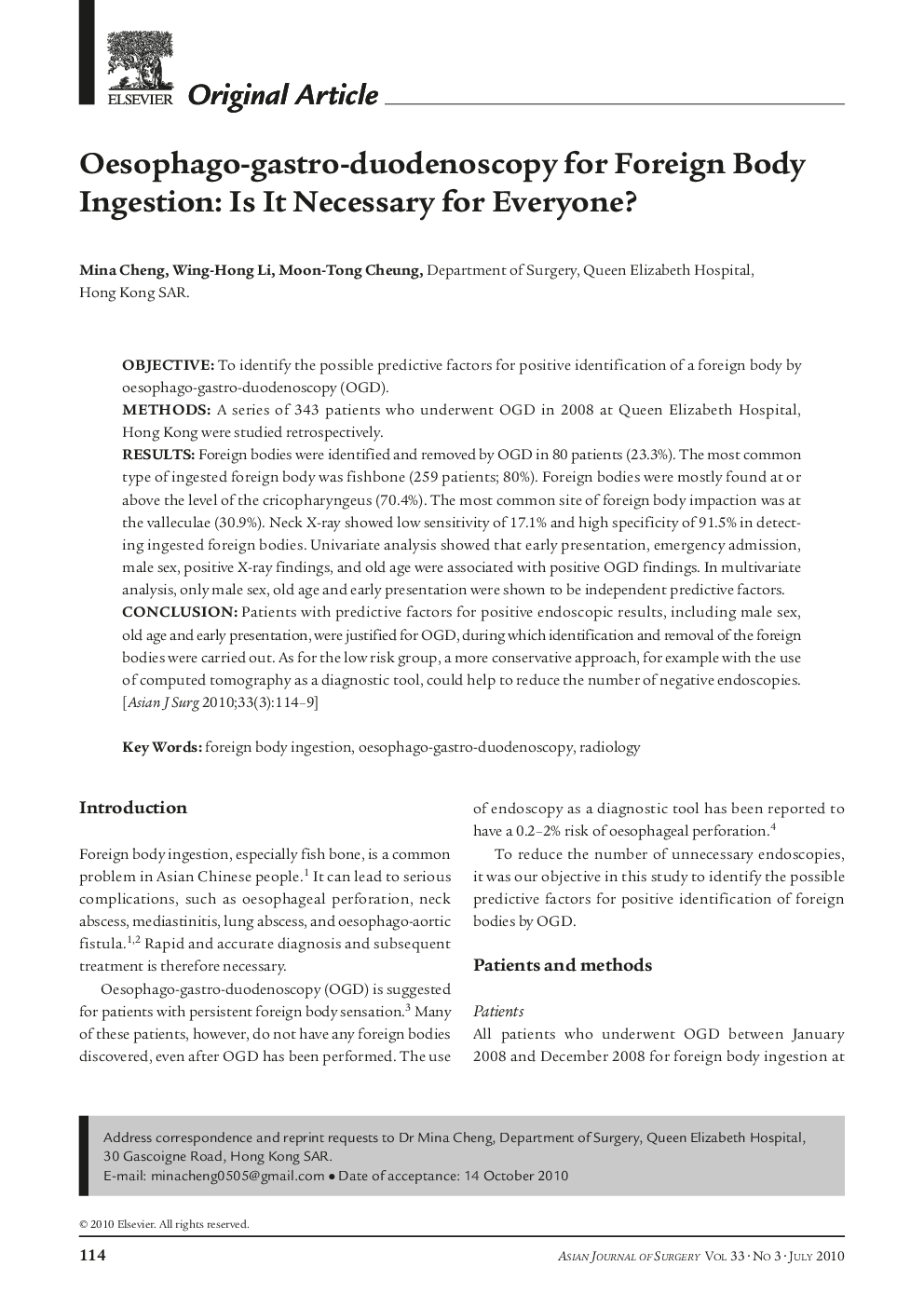| Article ID | Journal | Published Year | Pages | File Type |
|---|---|---|---|---|
| 4282862 | Asian Journal of Surgery | 2010 | 6 Pages |
ObjectiveTo identify the possible predictive factors for positive identification of a foreign body by oesophago-gastro-duodenoscopy (OGD).MethodsA series of 343 patients who underwent OGD in 2008 at Queen Elizabeth Hospital, Hong Kong were studied retrospectively.ResultsForeign bodies were identified and removed by OGD in 80 patients (23.3%). The most common type of ingested foreign body was fishbone (259 patients; 80%). Foreign bodies were mostly found at or above the level of the cricopharyngeus (70.4%). The most common site of foreign body impaction was at the valleculae (30.9%). Neck X-ray showed low sensitivity of 17.1% and high specificity of 91.5% in detecting ingested foreign bodies. Univariate analysis showed that early presentation, emergency admission, male sex, positive X-ray findings, and old age were associated with positive OGD findings. In multivariate analysis, only male sex, old age and early presentation were shown to be independent predictive factors.ConclusionPatients with predictive factors for positive endoscopic results, including male sex, old age and early presentation, were justified for OGD, during which identification and removal of the foreign bodies were carried out. As for the low risk group, a more conservative approach, for example with the use of computed tomography as a diagnostic tool, could help to reduce the number of negative endoscopies.
